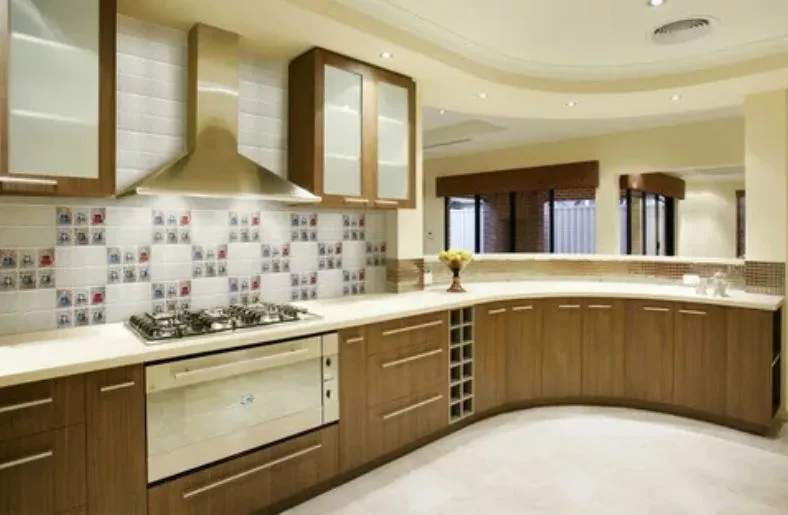The kitchen is often regarded as the heart of the home, a space where functionality meets aesthetics. For most homeowners, the cabinets define the character and utility of this space. With the Average Kitchen Size varying based on home design, cabinets must be tailored to fit both compact urban kitchens and sprawling suburban layouts. A professional kitchen cabinet manufacturer plays a pivotal role in delivering storage solutions that are both functional and visually appealing.
The Importance of Quality Cabinetry
Cabinets are not just storage units; they are essential components of the kitchen’s overall design and functionality. High-quality cabinets enhance the kitchen’s durability, offering resistance to wear and tear while maintaining their aesthetic appeal over time. Manufacturers who prioritize craftsmanship and materials provide homeowners with lasting value. Choosing the right kitchen cabinet manufacturer is crucial to ensuring a balance between style, utility, and durability.
Materials Used in Kitchen Cabinet Manufacturing
The material selection is a cornerstone of cabinet manufacturing. Popular options include solid wood, plywood, medium-density fiberboard (MDF), and particleboard. Each material offers distinct benefits:
- Solid Wood: Known for its natural beauty and strength, solid wood is ideal for premium kitchens but comes at a higher cost.
- Plywood: Durable and resistant to warping, plywood is a preferred choice for structural cabinet components.
- MDF: Economical and smooth, MDF is excellent for painted finishes but less durable under heavy use.
- Particleboard: Affordable and versatile, particleboard is commonly used in budget-friendly cabinets but has lower durability.
Manufacturers often combine these materials to balance cost and performance, offering customers a range of options.
Custom vs. Stock Cabinets: What to Consider
A key decision for homeowners is whether to invest in custom or stock cabinets. Stock cabinets, produced in standard sizes and finishes, are cost-effective and readily available. On the other hand, custom cabinets are tailored to the homeowner’s specifications, allowing for unique designs and optimized use of space.
Kitchen cabinet manufacturers specializing in custom solutions work closely with clients to create designs that suit their needs, blending functionality with aesthetics. However, custom cabinets typically require longer lead times and higher budgets compared to their stock counterparts.
The Manufacturing Process
The manufacturing of kitchen cabinets involves several stages:
- Design and Planning: Manufacturers collaborate with designers or directly with homeowners to finalize dimensions, materials, and styles.
- Material Preparation: Raw materials are cut and prepared based on design specifications.
- Assembly: The cabinet components, such as doors, drawers, and frames, are assembled.
- Finishing: Cabinets are sanded, painted, or stained to achieve the desired look.
- Quality Control: Final inspections ensure that the cabinets meet design and durability standards.
Advanced manufacturers incorporate technologies like computer-aided design (CAD) and CNC machines for precision and efficiency.
Trends in Kitchen Cabinet Design
Modern homeowners seek cabinets that align with current trends while remaining timeless. Popular design trends include:
- Minimalist Designs: Clean lines and handle less cabinets offer a sleek, contemporary look.
- Two-Tone Finishes: Contrasting colors for upper and lower cabinets add visual interest.
- Sustainable Materials: Eco-friendly options like reclaimed wood or low-VOC finishes are gaining popularity.
- Smart Storage Solutions: Features such as pull-out shelves, lazy Susans, and vertical dividers maximize functionality.
Manufacturers who stay ahead of these trends can cater to diverse customer preferences, ensuring their products remain competitive in the market.
The Role of Innovation in Cabinet Manufacturing
Innovation is at the forefront of modern kitchen cabinet manufacturing. From advanced hardware like soft-close hinges to the integration of LED lighting, manufacturers are continuously enhancing cabinet functionality. Moreover, sustainable practices, such as using recycled materials and minimizing waste, are becoming integral to the industry.
Digital technology also plays a crucial role. Virtual reality (VR) tools allow homeowners to visualize cabinet designs in their kitchens before production begins, ensuring satisfaction with the final product.
Choosing the Right Kitchen Cabinet Manufacturer
Selecting a reliable manufacturer involves considering several factors:
- Reputation: Look for manufacturers with positive customer reviews and a strong track record.
- Customization Options: Ensure the manufacturer can meet specific design requirements.
- Material Quality: Verify that the materials used are durable and appropriate for your needs.
- Warranty: A good manufacturer provides warranties that reflect confidence in their products.
- Budget Alignment: Find a manufacturer that offers quality options within your price range.
Homeowners should research thoroughly and, if possible, visit showrooms to assess the quality of cabinets firsthand.
Conclusion
A professional kitchen cabinet manufacturer is indispensable in creating a functional and beautiful kitchen. By combining quality materials, innovative designs, and skilled craftsmanship, manufacturers transform kitchens into spaces that meet both practical needs and aesthetic desires. Whether designing for a small urban apartment or a spacious suburban home, these professionals ensure that every inch of the kitchen is optimized for style and functionality. For homeowners, investing in high-quality cabinets is a decision that enhances the overall value and enjoyment of their home.

